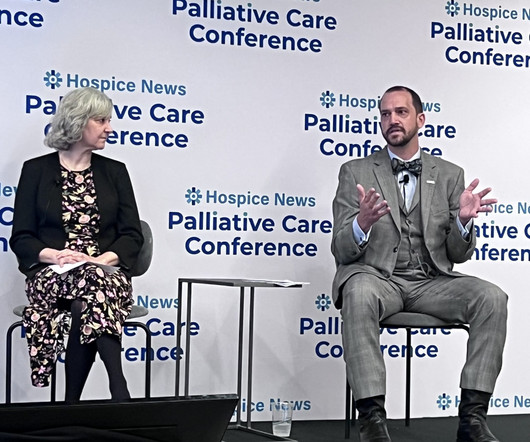Hospice Palliative Care: Palliative Care in CMMI Programs
Hospice News
JUNE 5, 2023
This article is based on a discussion with Fred Bentley, Managing Director for Medicare Innovation and ATI Advisory, Allison Silvers, Chief of Healthcare Transformation at the Center to Advance Palliative Care and Ryan Klaustermeier, Vice President of Professional Services at Axxess. Hospice News: Excellent.












Let's personalize your content